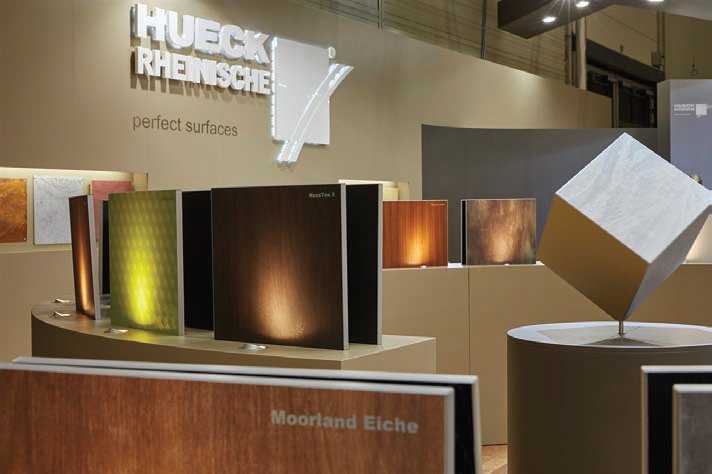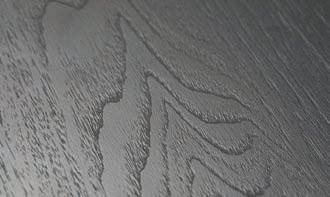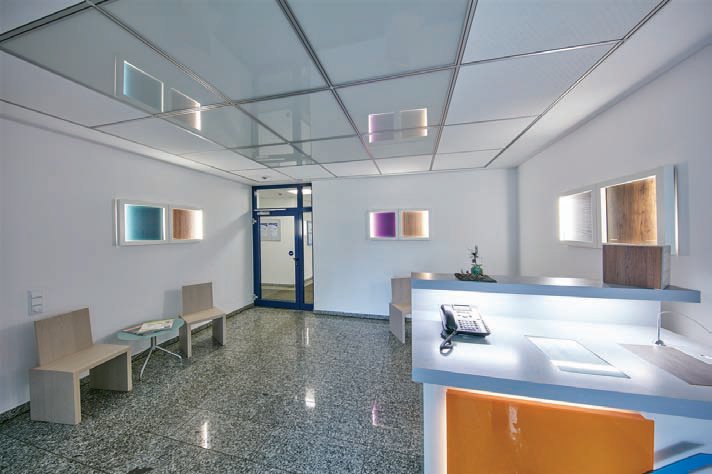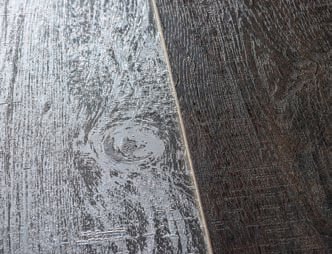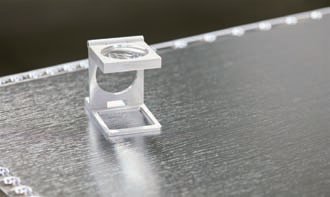Where science meets art
7 January 2016The Hueck group of companies can trace its origins back to 1938 in the production of brass and aluminium plates. Today it offers a complete design and manufacturing service, including chrome plating the plates inhouse at its works in Viersen, as Mike Botting discovered.
Founded 77 years ago in Lüdenscheid, manufacturing large brass and aluminium plates, Hueck has grown and developed in the intervening years. In 1977 it produced its first textured press plates and in 1994 bought its major competitor, Standex of Viersen, where the group is headquartered today.
In 1999, Berndorf Band AG, the wellknown continuous stainless steel press belt manufacturer in Berndorf, Austria, invested in Hueck, as the company was then known, and in 2007, Berndorf also bought the press pad maker Rheinische Press Pads of Stolberg. Berndorf finally became the sole owner of the Hueck Group in 2015 and the parent company retains the production of all belts, while Hueck specialises only in plates.
Hueck Rheinische offers a full textured plate service, from design through etching to chroming. The latter skill - chroming - is a rare and sophisticated one and something which very few companies can offer these days.
"You wouldn't be able to start up a chroming plant today; it is a very complicated process with strict environmental controls," said Wolfgang Stoffel, ceo of Hueck Rheinische. "We have a very special license allowing us to carry out chrome plating and the process is strictly controlled and documented."
Hueck Design was founded in 2015 and is headed up by Berthold Thölen, who explained that sight and touch are vital to the perception of surfaces, especially if you want to imitate a natural surface, such as wood or stone. The combined sense of sight and touch is known as the 'haptic' of the surface.
"We have to get the surface of a plate to the point where you see the effect together with how it feels," said Mr Thölen. "We sell surfaces but we also sell nature. Within this company, we are getting away from making tools and nearer to 'making nature'."
Mr Stoffel continued: "This is why we started Hueck Design as a separate company, to offer a full service from design right up to the finished plate for registered embossing."
Hueck Design is not competing with the decor printers, but is working with them to realise their designs with that all-important haptic and to produce the finished plate more quickly and reliably than working separately.
"We do the colour separations for the decor printers' designs for the customer to engrave its printing cylinders," explained Mr Thölen.
"We have also started to produce design proposals to offer our customers because we believe this is something that the market needs and is interested in, especially with embossed-in-register increasing in popularity all the time.
"Creating a texture is like writing a tune, using all the keys on the piano."
For some years, Hueck has printed the etch-resistant designs via digital printing and has its own print systems and special inks, for a process which it has patented. It can also offer calender printing, if required.
A significant advance in creating that realistic surface came with Hueck's development of a multi-gloss chromium system, so that different areas of a design can have different levels of gloss - for instance on the 'crests and troughs' of a woodgrain effect or textured stone surface - or different gloss levels on a fantasy design, which can create a very convincing 3-D effect. The company also holds the patents for this process.
"We consider ourselves the market leader in this kind of technology and our turnover is approximately the same as our four nearest competitors combined," said Mr Stoffel.
The maximum size of plate that Hueck can produce is 2.7 x 8m and this covers every requirement worldwide, said the chief executive; and it covers high- and lowpressure melamine surfaces.
"In the upper segments of the market, our plates can undergo up to 100 processes in our factory here and a multi-chromium surface will frequently involve 50 to 60 processes," added Mr Stoffel. "Every plate is unique, but the end-product must always match [for a given design] and we can offer this."
While Hueck does still offer service for the older system of brass plates, steel is replacing these. It is harder and has springback, which brass doesn't, so steel plates have a longer life.
"We use two different types of steel - AISI 410 and AISI 630," said Mr Stoffel. "The latter grade is vacuum melted so has less defects than AISI 410. It is more expensive, but can be re-used and re-ground more times [because of the lack of internal defects].
"Plates for making laminate flooring suffer more wear than those used for furniture, so AISI 630 is more common for press plates intended to produce flooring."
Hueck processes the plates with electrochemical, rather than mechanical, polishing.
"Mechanical only touches the tips of the engraving, while our system gets to all parts of the profile, thus producing a much better surface," said Mr Thölen. "We have developed all these systems over the past 10 years, step-by-step, and now we are well positioned in the market. Etching, chroming and polishing are the most important processes in our company."
Hueck Rheinische also offers the press compensation pads mentioned earlier. These pads affect the rate of cure of the resin, which in turn affects the quality of the surface produced during pressing.
"We are the only company offering plates, pads, assistance with resin chemistry and the know-how in each of those areas. Our service guys are experienced in all these systems, so we offer 'a solution from the one hand'," said Mr Stoffel.
The latest piece of equipment in the Viersen factory, started up in October 2015 in its own reflection-proof room within the factory, is the new scanner which will scan any natural material to be reproduced in plate designs.
Hueck says it always produces a 500 x 500mm plate in its laboratory for its customers to trial and this becomes the master plate. Every subsequent full-size plate produced is checked against it. Each laboratory plate is unique and kept on file at Viersen. Currently, that means a stock of 18,000 of these 500 x 500mm plates.
"If a customer wants a plate from 20 years ago, we can provide it," said Mr Thölen, proudly.
"We must be the best in technology, but we must also be the best in design," said Mr Stoffel. "The consumer is making his or her decision on what they like, not the technical excellence of our product, and it is not the cost of the plate but the ultimate cost of the product - and the durability of the plate - that counts."
